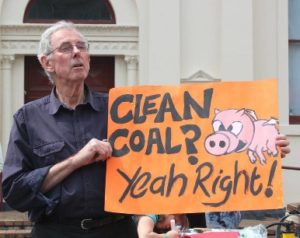The simple approach to carbon
Warwick Smith

What is fee and dividend carbon pricing?
Carbon fee and dividend is a model for pricing climate pollutants where a fee is charged on producers of emissions, then all money is given back to house- holds as a dividend. The entire sum collected from the fee, minus administration costs, would be divided between all adult permanent residents, with an extra half share per child in the household. None of the money involved stays in government hands or is spent on government programs.
This carbon pricing mechanism has recently been adopted by Canada and has just been modelled for Australia by academics at the University of New South Wales. It starts with a low carbon price, perhaps $10 per tonne, and goes up by $10 per tonne every year until reaching a sufficiently high price to drive decarbonisation. Perhaps $50 would be enough. The key advantages over other schemes are simplicity, fairness, and the potential for broad political support.
Simplicity: With a high enough carbon price, there could be a rapid transition to a low-carbon economy with no need for complex regulation of industry or subsidies for renewable energy. A high carbon price is possible with minimal disruption or hardship because of the dividend. During the transition, businesses can pass on costs, but house- holds are compensated for the higher prices. Both consumers and producers would have a financial incentive to switch to lower emissions products and services.
Fairness: In Canada and Australia, most households would be better off under fee and dividend than they are now. Many prices will go up, but dividend payments will be greater than price increases for lower-income households because they use less carbon-intensive goods and services than high-income households. UNSW research has found that, at a price of $50 per tonne, households in the bottom 20 per cent of income earners would be, on average, more than $1200 per year better off and average income households would be nearly $600 better off.
Potential for broad political support: Because the system is revenue neutral, there is no impact on government budgets. The capacity to do away with most regulation and subsidies also appeals to free market advocates who dislike government intervention, but acknowledge the problems caused by greenhouse gas pollution.
Source: RE blogs
Reconstructing Economics, 6 Jan 2019 https://reconstructingeconomics.com/2019/01/06/the-simple-approach-to-carbon/
THE POLITICAL AND ECONOMIC ORIGINS OF OUR TIME
This article was published in The Canberra Times and other Fairfax newspapers.





























